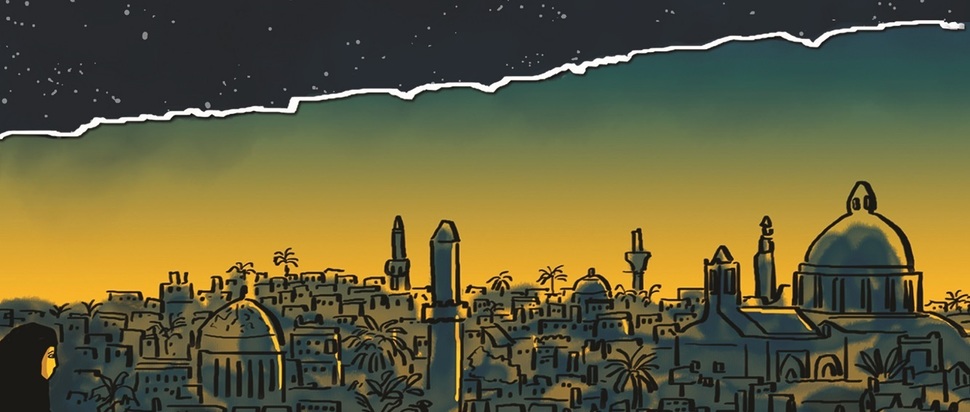The Wolf of Baghdad by Carol Isaacs
Carol Isaacs' graphic memoir is a journey through heritage and loss, telling the story of Baghdad's Jewish population
In the 1940s, roughly one third of Baghdad’s population was Jewish. By 2016, this number had dropped to just five people. A haunting journey through memory, trauma and loss, graphic memoir The Wolf of Baghdad draws on autobiography, folklore and history to confront this tragic dissolution of an entire community.
Carol Isaacs’ panels are entirely wordless, relying instead on emotive illustrations of her family and heritage’s ghostly remains, with text isolated on otherwise blank pages in the form of anecdotes, reminiscences and lamentations collected from family members and other Baghdadi Jews. Isaacs’ visual style is muted yet incisive, her textual minimalism allowing the images to breathe and linger. However, the scarcity of text also leads The Wolf of Baghdad to lack the complex internal characterisation that makes other graphic memoirs, such as Persepolis, so potent and heart wrenching. This reduced nuance also extends to the, at times, flattened relationship between the Arab and Jewish populations, a subject that – in its continued fraught state – cannot be skimmed past.
Where The Wolf of Baghdad most succeeds is in telling Isaacs’ own narrative, in which palimpsests of memory form a fractured yet entangled relationship to a home she has never known. There is a Finnish word, kaukokaipuu, explains Isaacs, that means homesickness for a place you’ve never been. For those similarly suspended between cultures, conflicts and belonging, The Wolf of Baghdad tells a poignant and achingly familiar story.
Myriad, 30 Jan, £16.99
myriadeditions.com/books/the-wolf-of-baghdad/
